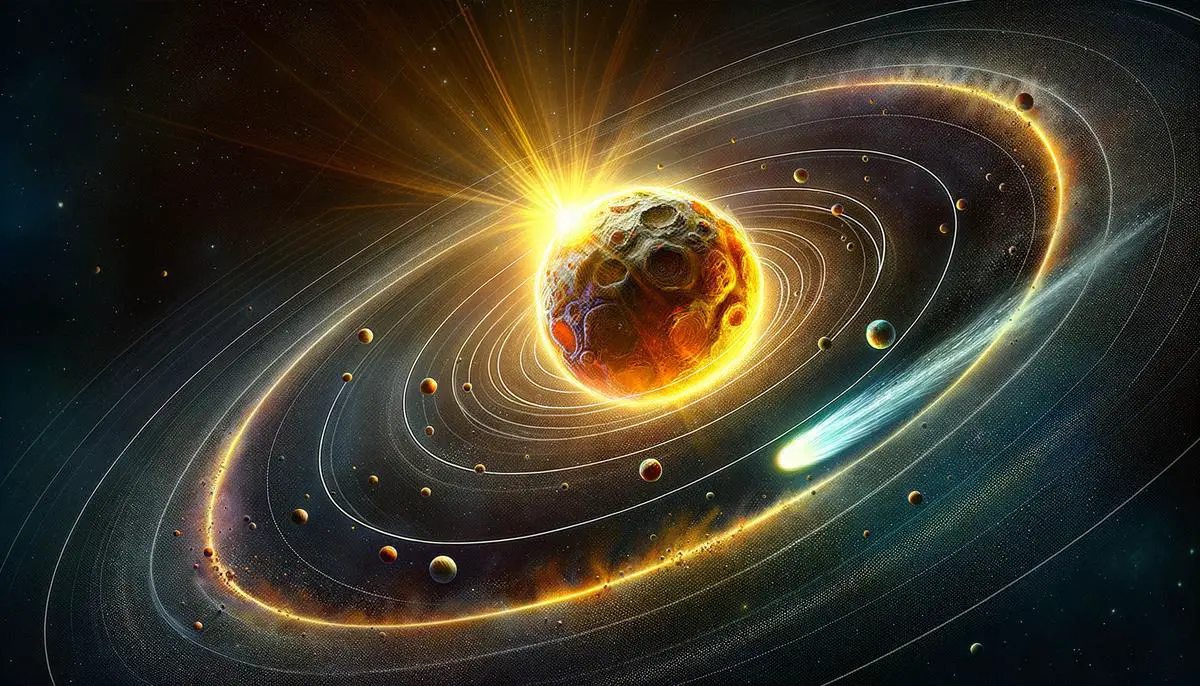Comet Tsuchinshan-ATLAS, with its lengthy orbital period and unique path through our solar system, has captivated astronomers and enthusiasts alike. As we follow its progress, the comet's behavior continues to be a subject of keen observation and analysis.
Discovery and Initial Observations
Tsuchinshan-ATLAS was first spotted on January 9, 2023, at China's Purple Mountain Observatory located at the XuYi Station. Initially mistaken for an asteroid, it was later re-identified as a comet by the Asteroid Terrestrial-impact Last Alert System (ATLAS) in South Africa on February 22, 2023. These observations led to its official designation of C/2023 A3.
When discovered, the comet was in the constellation Serpens Caput, approximately 680 million miles from the Sun, beyond Jupiter's orbit. It was shining at +18th magnitude.
Key facts about Comet Tsuchinshan-ATLAS:
- Orbital period: 80,660 years
- Orbital inclination: 139 degrees relative to the ecliptic plane
- Perihelion date: September 28, 2024
- Closest approach to Sun: 36 million miles
- Closest approach to Earth: October 13, 2024, at 44 million miles
Currently, observers in the Southern Hemisphere have the best chance to track it. The comet has shown signs of an ion tail, indicating a healthy nucleus which raises hopes it will remain intact up to and beyond perihelion.
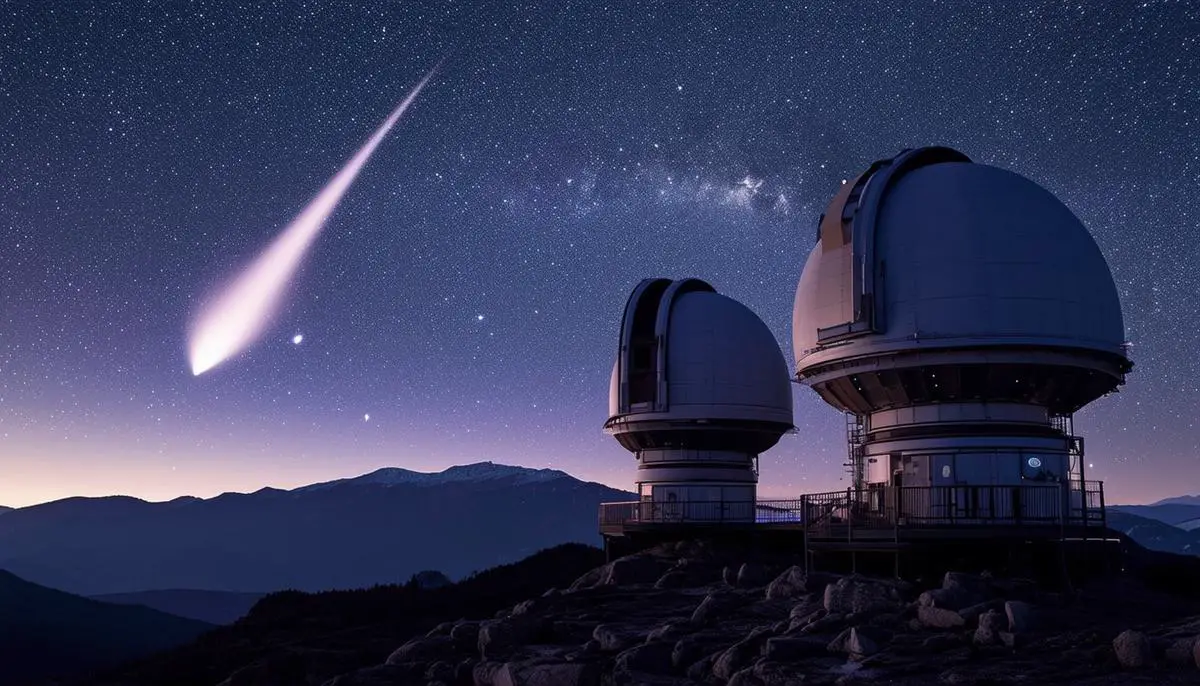
Orbital Characteristics and Predictions
Tsuchinshan-ATLAS's highly inclined retrograde orbit of about 139 degrees relative to the ecliptic plane sets it apart from most other objects in the solar system. This peculiar path takes it on an 80,660-year journey around the Sun.
The comet's upcoming close encounters with the Sun and Earth provide a unique opportunity for observation. At perihelion on September 28, 2024, the comet will be just 36 million miles away from our star. This proximity is significant because the Sun's heat and gravitational forces can impact the comet's structure and visibility.
Following perihelion, Tsuchinshan-ATLAS will pass behind the Sun from our perspective, becoming temporarily invisible. By October 13, 2024, the comet will make its closest approach to Earth, coming within 44 million miles.
Brightness Predictions:
- Some predictions suggest a magnitude as bright as Venus (around +0 or brighter)
- Forward scattering of sunlight may enhance visibility
- Similar effect observed in Comet McNaught in 2007
However, predicting the precise behavior and luminosity of a comet is challenging, especially for newcomers from the Oort Cloud like Tsuchinshan-ATLAS. These comets, visiting the inner solar system for the first time, have volatile surfaces that may react unpredictably when exposed to the Sun's intense radiation.
Despite these uncertainties, the orbital characteristics of Tsuchinshan-ATLAS position it favorably for potential naked-eye observation. Its changing brightness and visibility will be of great interest to astronomers worldwide.
Comparisons to Past Comets
Comparing Tsuchinshan-ATLAS to its predecessors provides valuable insights into its potential behavior. Hale-Bopp and ISON serve as examples of how diverse cometary behavior can be, despite promising starts.
| Comet | Discovery Year | Outcome |
|---|---|---|
| Hale-Bopp | 1995 | Celestial sensation, bright and long-lasting |
| ISON | 2012 | Disintegrated during close approach to Sun in 2013 |
Tsuchinshan-ATLAS shares initial discovery similarities with both. Its identification near Jupiter's orbit parallels Hale-Bopp's early detection. However, like ISON, Tsuchinshan-ATLAS is an Oort Cloud comet, new to the inner solar system. This distinction is crucial, as Oort Cloud comets often possess volatile components that may unpredictably outgas when exposed to intense solar radiation for the first time.
Orbital characteristics further underscore these comparisons. Hale-Bopp's perihelion distance was 0.914 AU, while Tsuchinshan-ATLAS will come significantly closer at 0.39 AU. This proximity increases the potential for a spectacular display but also heightens the risks of fragmentation.
A distinguishing feature for Tsuchinshan-ATLAS could be forward scattering, an effect that magnified the brilliance of Comet McNaught in 2007 and Skjellerup–Maristany in 1927. Such forward scattering could elevate its visibility, potentially making it a captivating display.
"Whether Tsuchinshan-ATLAS will grace our skies with brilliance or succumb to the Sun's unforgiving grasp remains to be seen."
As we prepare for its approach, reflecting on the triumphs and failings of past comets enhances our understanding and tempers our expectations. The inherent unpredictability of first-time sun-approaching comets cannot be overstated, making Tsuchinshan-ATLAS's journey a thrilling event for astronomers and sky-watchers alike.
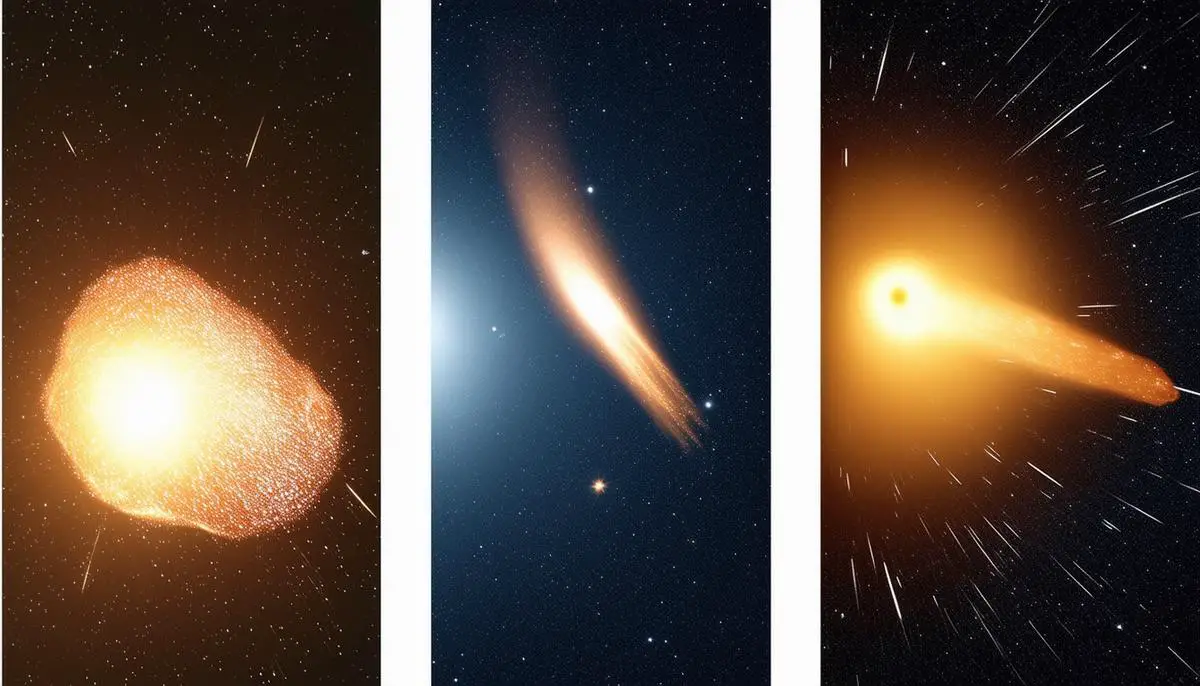
Potential for Disintegration
The potential disintegration of Comet Tsuchinshan-ATLAS is a topic of debate among astronomers. Dr. Zdeněk Sekanina, a prominent Czech-American astronomer, suggests the comet may collapse before reaching its closest point to the Sun. His research indicates several concerning signs:
- Slower than expected brightening
- Fragmented nucleus
- Unusually narrow tail
- Shedding of "dark, porous blobs"
Dr. Sekanina argues that intense heat and gravitational forces near perihelion could cause complete fragmentation.
However, other experts present contrasting views:
- Nick James, director of the Comet Section of the British Astronomical Association, notes the absence of non-gravitational accelerations typically associated with fragmenting comets.
- Dr. Clay Sherrod from the Arkansas Sky Observatories believes Tsuchinshan-ATLAS remains intact, citing its current appearance.
- Amateur astronomer Taras Prystavski has photographed the comet, observing it looks "healthy" with an ion tail, often associated with a stable nucleus.
- Daniel Green of the Central Bureau for Astronomical Telegrams advises a "wait and see" approach, acknowledging the comet's healthy appearance but noting that definitive conclusions can only be drawn as it approaches perihelion.
These differing opinions highlight the unpredictability of comets, especially those making their first journey through the inner solar system. While Dr. Sekanina's studies are comprehensive, the dissenting voices remind us of the many variables at play. The comet's fate remains uncertain, and continued observation will be crucial in determining the outcome.
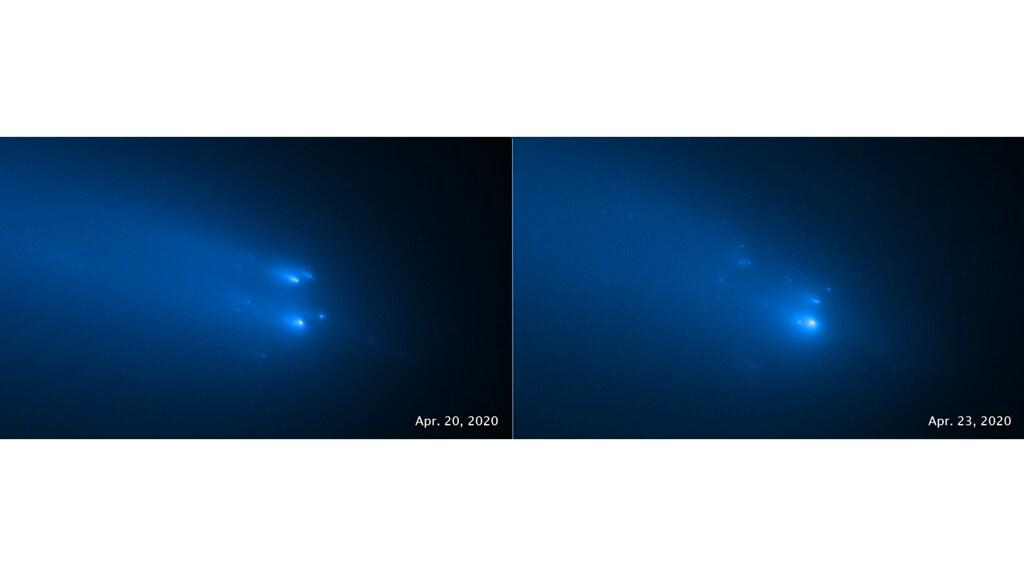
Current Observations and Future Prospects
Tsuchinshan-ATLAS is currently in the constellation Sextans, making it challenging to observe from the Northern Hemisphere. Southern Hemisphere astronomers have been tracking its progress despite low altitude and twilight sky challenges. Recent observations include:
- Thomas Lehmann in Chile: magnitude +8.2 on August 12
- Toni Scarmato using STEREO-A spacecraft data: magnitude +7.2 on August 17
The difference in brightness estimates highlights the complexities of comet observation. The presence of an ion tail, noted by both amateur and professional astronomers, suggests an active and strong nucleus.
As Tsuchinshan-ATLAS approaches perihelion on September 28, 2024, visibility is expected to improve. If it survives, the comet could become visible to the naked eye, potentially reaching magnitude +21. Key viewing periods include:
- Days following perihelion: low in the eastern sky before sunrise
- Second and third weeks of October: prime viewing in the west-southwest sky
The phenomenon of forward scattering could enhance visibility, potentially creating a dramatic increase in brightness.
"Tsuchinshan-ATLAS has the potential to be a standout astronomical event of 2024, provided it withstands the intense solar forces at perihelion."
While prospects are promising, caution is warranted due to the unpredictable nature of comets. Ongoing observation using ground-based telescopes and space-based assets like STEREO will be crucial for tracking progress and informing viewing opportunities.
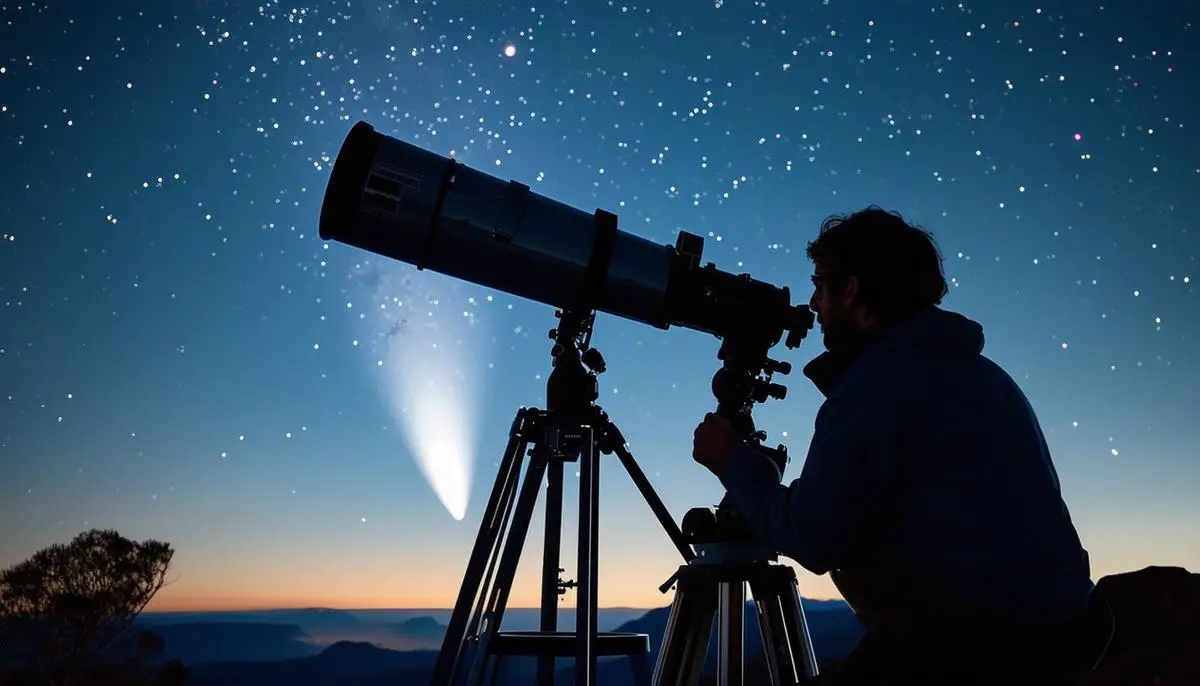
As Tsuchinshan-ATLAS approaches, we anticipate a potentially remarkable celestial event. Whether it presents a brilliant display or a more modest showing, the comet's journey exemplifies the dynamic nature of our universe. Prepare your telescopes and keep watch for what could be a memorable astronomical occurrence in 2024.
![]()
